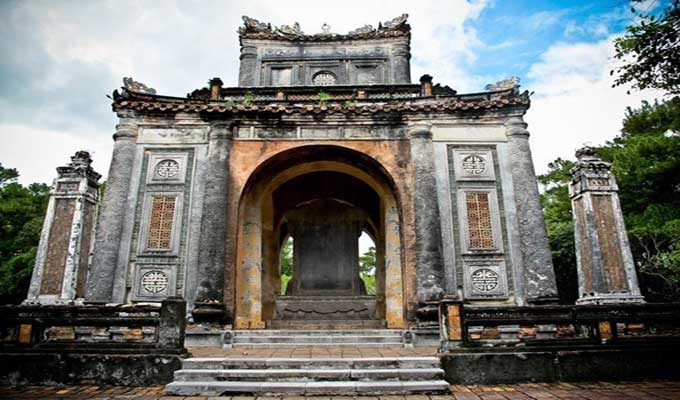The Prime Minister has recently signed a decision to recognise four more ancient items under the Nguyen Dynasty (1802-1945), the last feudal dynasty in Viet Nam, as national treasures.

The newly-recognised treasures are the throne of Nguyen kings, the King’s costume used in Giao ritual (God-worshipping ritual), the Khiem Cung Ky stone stele, and a collection of ten copper cauldrons.
The new recognition has brought the number of Nguyen Dynasty national treasures kept at Hue ancient imperial city to six.
The throne of the Nguyen kings is the only throne of a feudal dynasty that remains intact until now. A symbol of the dynasty’s power, it is placed at the centre of Thai Hoa Palace. The special chair is decorated with various dragon patterns to present wish for happiness and longevity.

The costume wore by Nguyen kings at Giao rituals to worship God, also one-of-a-kind item, is being preserved at the Hue Royal Antiquities Museum. It was embroidered with traditional patterns such as the dragon, the sun, the moon, stars, clouds, mountains, birds, and water.

The Khiem Cung Ky stone stele is inscribed with an article titled “Khiem cung ky” by King Tu Duc (1848-1883) and now is being preserved at the King’s tomb in Hue imperial relic complex. In the article, the King revealed his innermost feelings as a king amidst changes and challenges facing his country.

The copper cauldron collection is being preserved at the Hue Royal Antiquities Museum in Hue imperial relic complex. The cauldrons were cast in various sizes and weights under the reign of Lord Hien Vuong Nguyen Phuc Tan (1648-1687).
Items recognised before were a set of nine tripod cauldrons and nine holy cannons, and the great bell at Thien Mu Pagoda.
The set of nine tripod cauldrons were places in The Mieu yard in Hue imperial city, representing the wish about everlasting existence of the Nguyen Dynasty and a prosperous country. The highest cauldron is 2.5m high and the shortest is 2.3m high.

“Cuu vi than cong” (nine holy cannons) were cast during 1803 to 1804. After being enthroned, King Gia Long ordered the confiscation of bronze weapons from the previous reign to cast the cannons. The cannons were named after the four seasons and five main elements of metal, wood, water, fire and earth according to the Eastern philosophy. Each cannon is 5.1m long and weighs about 17,000 pounds.
The great bell of Thien Mu (literally celestial lady) Pagoda was engraved with dragon and phoenix patterns. It is 2.5m high and weighs 3,285 kg. The bell was cast during the rule of Lord Nguyen Phuc Chu in 1710 for worshipping at a national pagoda.